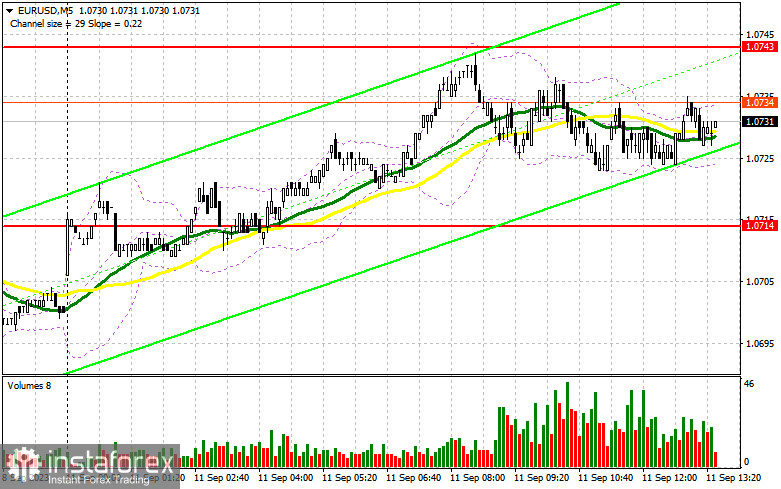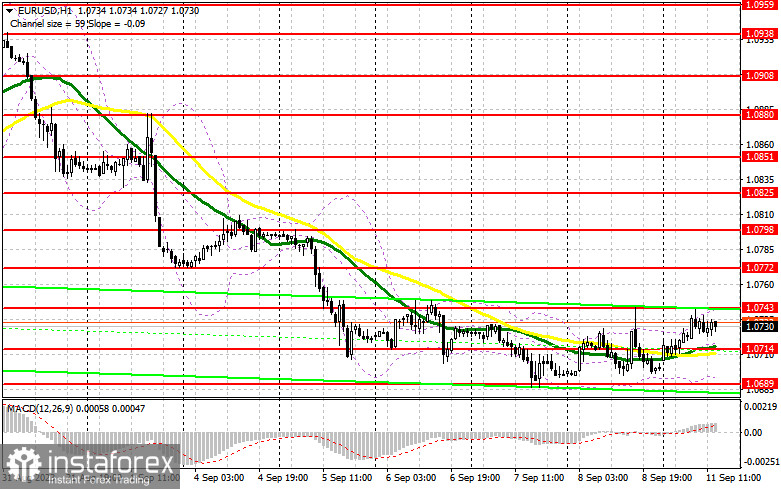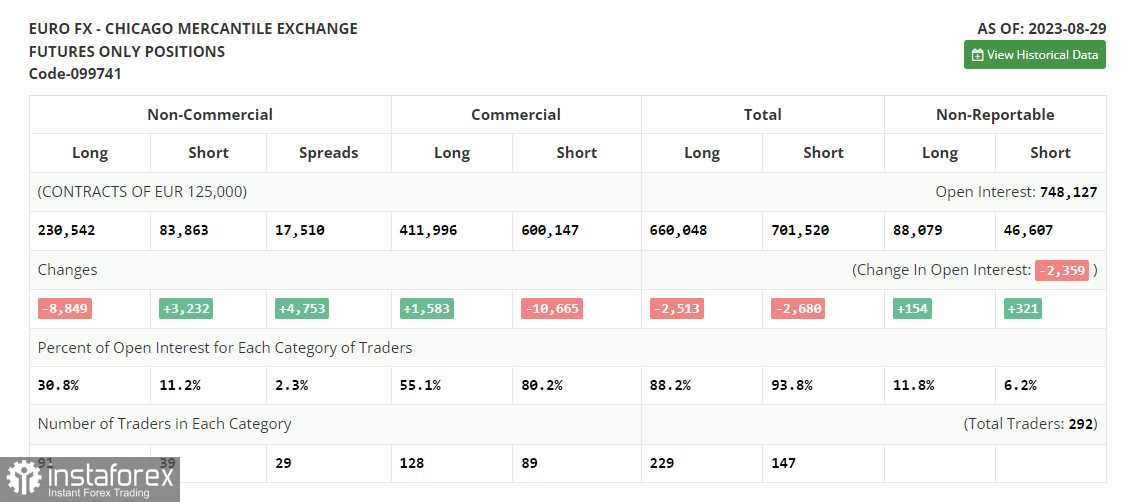In my morning forecast, I drew attention to the level of 1.0714 and recommended making market entry decisions based on it. Let's take a look at the 5-minute chart and analyze what happened. The pair did experience a decline, but due to low market volatility and trade volume, it never led to a false breakout. For this reason, I did not identify any market entry signals. The technical picture remained unchanged for the second half of the day.

To open long positions on EUR/USD, the following is required:
Considering that nothing during today's American session would push the pair beyond the sideways channel, I have decided not to reconsider the nearest support and resistance levels. I also expect low volatility and trade volume, making relying on strong market signals difficult. A decline and a false breakout at 1.0714 will confirm an appropriate entry point for long positions, with a recovery target towards 1.0743. A breakout and top-down testing of this range will strengthen demand for the euro, allowing a surge to 1.0772. The furthest target will be around 1.0798, where I would take profits. In the event of a decline in EUR/USD and a lack of activity at 1.0714 – the midpoint of the sideways channel, bears could regain control of the market. In this case, only a false breakout around 1.0689 will signal a euro purchase. I would open long positions from 1.0665 with a target of a 30-35 point upward correction within the day.
To open short positions on EUR/USD, the following is required:
Sellers attempted but still needed to reach the nearest support level. In the second half of the day, we will have to defend 1.0743. A false breakout at this level would signal a sale, paving the way for support at 1.0714. After breaking below and consolidating below this range, as well as a bottom-up retest, I expect to receive another signal targeting 1.0689, where I anticipate the presence of larger buyers. The furthest target will be around 1.0665 – a new monthly low, where I would take profits. In the event of an upward movement in EUR/USD during the American session and a lack of bearish activity at 1.0743, bulls will have a chance to build an upward correction against the bearish market at the beginning of the week. In this scenario, I would postpone short positions until the new resistance at 1.0772. Selling would also be an option there, but only after a failed consolidation. I would open short positions at 1.0798 with a 30-35 point downward correction target.


Indicator Signals:
Moving Averages
Trading is taking place just above the 30 and 50-day moving averages, indicating further upward movement of the pair.
Note: The period and prices of the moving averages considered by the author are on the hourly chart (H1) and differ from the general definition of classical daily moving averages on the daily chart (D1).
Bollinger Bands
In the case of an upward trend, the upper boundary of the indicator around 1.0743 will act as resistance.
Indicator Descriptions:
- Moving Average (determines the current trend by smoothing volatility and noise). Period 50. Marked in yellow on the chart.
- Moving Average (determines the current trend by smoothing volatility and noise). Period 30. Marked in green on the chart.
- MACD Indicator (Moving Average Convergence/Divergence) Fast EMA period 12. Slow EMA period 26. SMA period 9.
- Bollinger Bands. Period 20.
- Non-commercial traders - speculators, including individual traders, hedge funds, and large institutions, use the futures market for speculative purposes and meet certain requirements.
- Long non-commercial positions represent the total long open positions of non-commercial traders.
- Short non-commercial positions represent the total short open positions of non-commercial traders.
- The net non-commercial position differs between non-commercial traders' short and long positions.





















